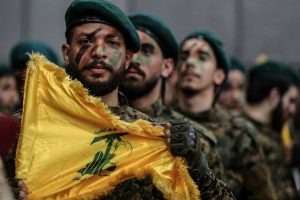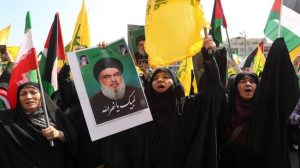Israel’s assassination of Hezbollah’s leader, Hassan Nasrallah, marks a turning point in the Middle East. The operation was the result of decades of strategic intelligence gathering, infiltration, and meticulous planning. Here’s how it unfolded and what it means for the region.
Decades of Espionage and Preparation

Israeli intelligence spent over 20 years infiltrating Hezbollah, planting spies, and gathering crucial information. This effort included recruiting operatives to install listening devices in bunkers and tracking top Hezbollah leaders.
One of Israel’s key tactics involved selling Hezbollah a new line of Apollo AR924 pagers. Marketed as durable and secure, the devices became popular among Hezbollah fighters. However, hidden within these pagers were explosive mechanisms, enabling Israel to strike when necessary.
The Trigger for Action

In late 2023, a Hezbollah technician grew suspicious of the pagers, leading some devices to be sent to Iran for inspection. Israeli intelligence feared their operation was at risk of exposure. Acting swiftly, Prime Minister Benjamin Netanyahu approved the detonation of the pagers, crippling Hezbollah’s communication network and neutralizing thousands of fighters.
This escalation set the stage for the assassination of Nasrallah, who had been under surveillance for years. Despite warnings from his aides to relocate, Nasrallah dismissed the threat, underestimating Israel’s resolve.
Nasrallah’s Controversial Leadership
Hassan Nasrallah rose to power in 1992 after his predecessor’s assassination. Under his leadership, Hezbollah evolved from a militia into a formidable military and political force. The group received extensive support from Iran, enabling it to train fighters, acquire advanced weaponry, and exert influence across Lebanon and the region.
Nasrallah’s popularity peaked after the 2006 war with Israel, but his decision to back Syria’s Bashar al-Assad during the civil war tarnished his image. Many viewed him as prioritizing Iran’s interests over Lebanon’s.
Even before Syria, suspicions about Hezbollah’s role in the 2005 assassination of Lebanese Prime Minister Rafik Hariri further strained relations with Sunni Arab countries. Despite these controversies, Nasrallah retained strong support among Lebanon’s Shia Muslim community.
The 2006 War and Beyond
Nasrallah led Hezbollah during the 2006 war with Israel, a conflict that resulted in significant casualties on both sides. Hezbollah’s resilience during the war elevated Nasrallah’s status as a symbol of resistance. However, his leadership also solidified Hezbollah’s transformation into a dominant political and military force in Lebanon.
Recent tensions escalated after Hamas’ October 7 attack on Israel, leading to near-daily exchanges of fire between Hezbollah and Israeli forces. This heightened state of conflict ultimately culminated in Nasrallah’s assassination and an Israeli invasion of southern Lebanon.
Implications for Lebanon and the Region

Nasrallah’s death leaves a leadership void within Hezbollah and creates uncertainty in Lebanon’s already fragile political landscape. This vacuum could ignite sectarian tensions and destabilize the country further.
For Israel, the operation sends a powerful message to its adversaries. It demonstrates the country’s military and intelligence capabilities, reinforcing its position as a formidable force against Iran and its proxies.
A Symbolic Victory for Israel
Beyond the immediate tactical gains, Nasrallah’s assassination carries significant symbolic weight. It disrupts Hezbollah’s command structure and weakens its capacity for future operations. For Israel, this act serves as both a response to past security failures and a warning to its enemies.
As tensions continue to escalate, the assassination of Hassan Nasrallah adds another layer of complexity to the Middle East’s ever-evolving landscape.
